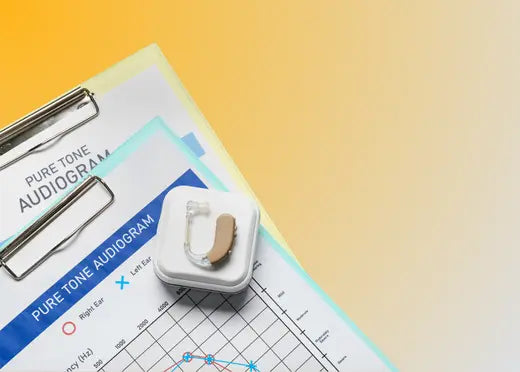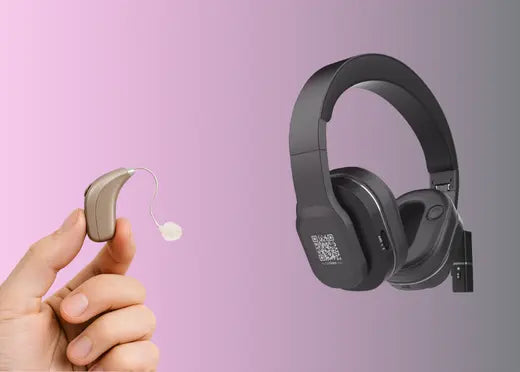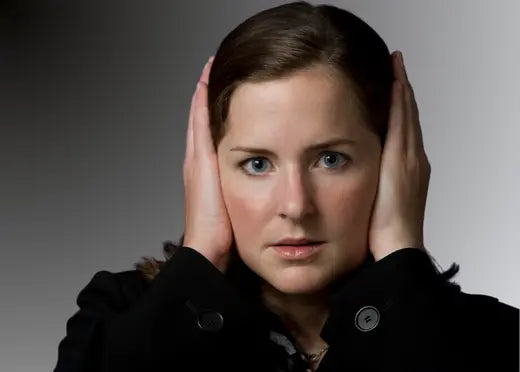Have you had an audiogram or are you about to have one? This hearing test is essential for understanding your level of hearing loss and guiding you toward a suitable solution. From interpreting the curves to the different options available (hearing aids, listening assistants like Spokeo ), this guide will help you see things more clearly.
What is an audiogram?
Definition and objective of this hearing test
An audiogram is a graph that represents your hearing ability based on the frequency and intensity of sounds you hear. It allows you to accurately quantify any potential hearing loss.
The course of an audiometric test
Performed by a hearing care professional or ENT specialist, the test involves listening to sounds of different frequencies through headphones to determine the hearing thresholds for each ear.
Recommended frequency of testing by age
From the age of 60, a hearing check is recommended every two years. In cases of discomfort or a family history, a test may be useful much earlier.
How to read and interpret your results
Curves and their meaning
On your audiogram, each ear is represented by a curve. The lower the curve, the more severe the hearing loss. The horizontal axis indicates frequencies (low to high), while the vertical axis indicates decibels (the volume required to hear).
The different types of identifiable hearing loss
The main types of loss are conductive loss, perceptual (neurological) loss, and mixed loss. Each requires a different solution, but mild to moderate forms are the most common.
Normal vs. pathological thresholds
Hearing loss is considered mild when the hearing loss is 20 dB or more, moderate when the hearing loss is 40 dB or more, and severe when the hearing loss is over 70 dB or more. Normal hearing is between 0 and 20 dB.
Evolution of audiograms over time
With age, hearing tends to gradually decline, particularly at high frequencies. Regular monitoring allows for rapid adjustment of the hearing solution.
Solutions according to your hearing profile
Options for light losses (20-40 dB)
In this case, a hearing aid like Spokeo may be sufficient. It improves speech understanding without requiring a prescription and is suitable for occasional or daily use, particularly at home or in the presence of loved ones.
Solutions for moderate losses (40-70 dB)
Depending on the context, medical equipment may be considered. However, some high-performance listening devices, such as Spokeo, may still be sufficient, particularly for people who do not wish to undergo a full medical course.
Approaches for severe to profound losses (>70 dB)
A custom-made hearing aid, supervised by a healthcare professional, remains essential. Spokeo does not replace a medical hearing aid in these cases, but can complement the hearing experience in certain targeted situations.
And when hearing aids are no longer an option?
In some cases of severe hearing loss, traditional solutions are no longer possible : discomfort, repeated failures, cognitive impairment, or simple refusal by the person concerned. These are common situations among dependent or disoriented elderly people.
In this context, Spokeo becomes a welcome alternative , as it does not require complex medical monitoring or invasive equipment. It can restore a minimum of auditory connection , particularly during essential exchanges (medical consultations, visits from relatives, group meals, etc.).
Spokeo isn't a medical solution, but in some cases, it's the only solution a person is willing to use. And that's often enough to change the quality of the relationship.
When a listening assistant is enough
Mild to moderate hearing loss: signs and symptoms
Do you often ask for repetitions? Do you turn up the volume on the television? Do you have trouble understanding people in public places? These are typical signs of early hearing loss, which may be compatible with the use of an assistant like Spokeo.
Economic and practical benefits of listening assistants
Without a prescription, accessible online, rechargeable, and easy to use: hearing aids are a practical solution, particularly for the elderly or dependent, for whom conventional equipment is difficult to access.
Concrete cases of improvement with a listening assistant
Many people are finding comfort in their lives with Spokeo: better conversations at the table, easier understanding during medical visits, and reduced noise stress in noisy places.
Benefits of Spokeo according to hearing profile
Sound personalization according to your audiogram
Spokeo offers several sound settings to accommodate common hearing profiles. It's not a medical device, but it targets essential needs with an accessible approach.
Selective voice amplification, noise reduction
With its remote lavalier microphone, Spokeo isolates the speaker's voice and eliminates background noise. This makes it easy to follow a conversation, even in a noisy environment.
User testimonials according to different profiles
Whether it's for an elderly person living alone, a caregiver accompanying a loved one, or an active senior at the beginning of hearing loss: Spokeo allows everyone to find a form of sound comfort without having to go through a long, medical process.
👉 Are you looking for a personalized hearing solution tailored to your profile?
Try Spokeo for a simpler, more accessible, faster… and often sufficient approach.













